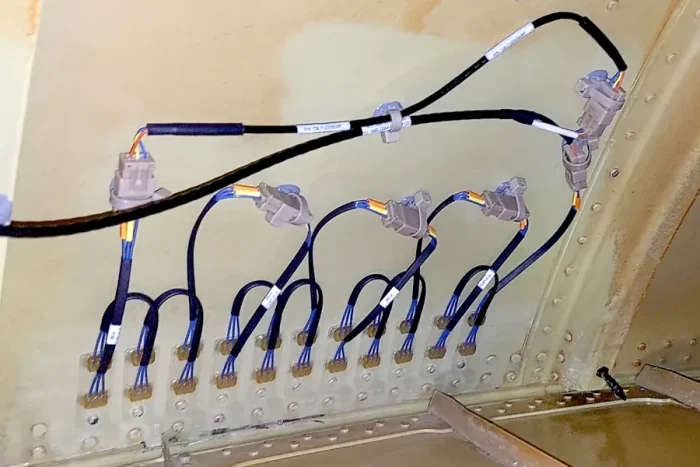Reducing hangar time can be considered the holy grail of aircraft maintenance. Innovative solutions like Structural Health Monitoring (SHM) can help to achieve this goal and at the same time support airworthiness.Inspection personnel naturally requires substantial time for thorough inspection – SHM sensors, on the other hand, allow for continuous in-service monitoring and thus less downtime. Additional to permanent monitoring, this helps to tackle the ongoing trend of staff shortage.

A promising project in this regard was conducted earlier this year: Comparative Vacuum Monitoring (CVM) is a SHM technology provided by Anodyne Electronics Manufacturing (AEM). They helped a North American airline to expand the use of CVM in their fleet and, to cope with this increased scale, began a collaboration with Testia, who provide extensive sensor installation and additional consultancy and training. CVM sensors are the first and only type with a technology readiness level 9 in the aerospace world. By minimizing the time for surface crack inspection, the sensors contribute to significant cost reductions. Their implementation on the airline’s fleet, consisting of aircrafts manufactured by both main OEMs, marks one of the first in-service applications of this technology at a larger scale.
Logically, the excitement of the team was tangible during the sensor installation: This collaboration is an important milestone on the path towards predictive maintenance on commercial aircrafts. As Testia’s SHM responsible Aswin Haridas highlights: “We are in a very inspiring phase of SHM development! At Testia, we are proud to contribute to these innovations with a holistic approach and with partners all across the aerospace industry.”
Testia aims for an advanced SHM methodology and acts as a full system integrator. Each use case is embedded in a different context, so it is crucial to emphasize the customer’s viewpoint to find the appropriate sensor technology with a pain-point driven approach.
(This article was first published in Aerospace Testing International, June 2024 issue)
